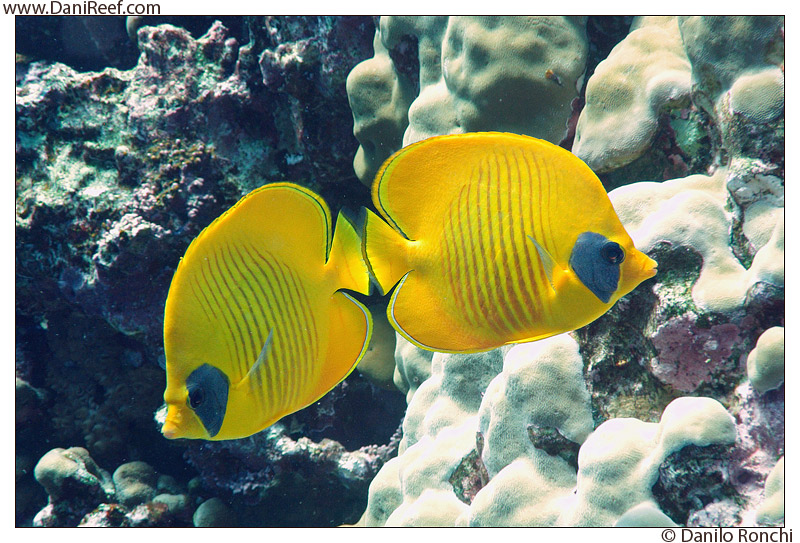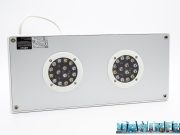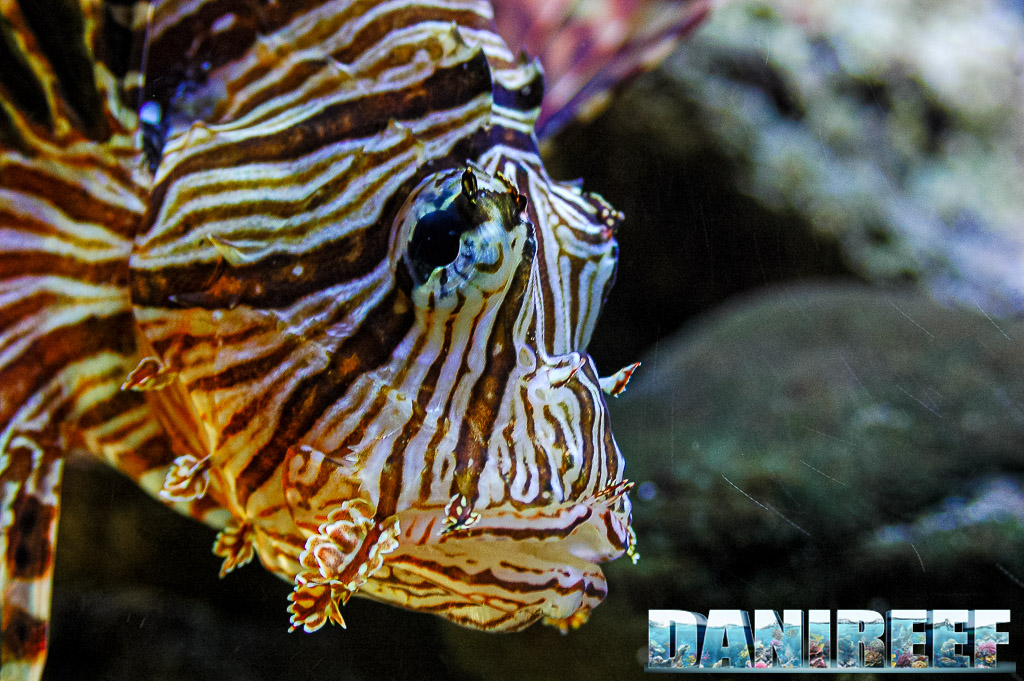
Two recent sightings of the Lionfish, Pterois miles, in Calabrian waters have brought public attention back to its expansion in the Mediterranean.
This article is also available in: Italiano
It was 2016 when for the first time here on DaniReef (read here) we informed you of the first sighting in Italian waters of the Pterois miles, commonly known as the lionfish. With this article we want to update you on how this invasive species is continuing to distribute in the Mediterranean and Italian waters.
Just a few days ago a press release from ISPRA reported two new sightings in Calabrian waters of two specimens of Pterois miles. The first promptly caught in late June 2023 “by professional fishermen” in the locality ‘Le Castella‘ (KR), at the depth of about 24 meters. The second specimen sighted and photographed on June 25, 2023, by a diver at a depth of about 12 meters, during a dive along the coast of Marina di Gioiosa Ionica(RC).
Pterois miles
Scientific name: Pterois miles (Bennet, 1828);
Common name: Lionfish;
Geographical Range: P. miles is a species from the Indian Ocean (Kulbicki et al., 2012), known from the Red Sea to eastern South Africa, Arabian Sea, Persian Gulf, Gulf of Oman, Laccadive Sea, Bay of Bengal, Andaman Sea, and Indonesian region (Kulbicki et al., 2012).
The Pterois genus includes 12 species, the best known and most studied being the Pterois miles and Pterois volitans Species. In the Indo-Pacific, lionfish are preyed upon by groupers and occasionally by sharks that catch them at various stages of their growth.
Lionfish: an invasive species
Pterois miles are among the most invasive species in the world, and their success can be attributed to:
- Their degree of “poisonousness” which greatly reduces their predation;
- They are generalists, feeding on a large number of different organisms;
- They are very resilient, easily adapting to different physical and chemical conditions of water;
- High fertility and fast growth.
Since the 1990s after an accidental introduction to the shores of the United States it has been able to settle and expand throughout the Caribbean Sea. Beginning in 1992 it has spread to the Eastern Mediterranean Sea as a result of lessepsian migration (migration from the Red Sea to the Mediterranean through the Suez Canal).
What really caused their introduction to U.S. shores?
There is no firm evidence as to how the Pterois miles and Pterois volitans arrived in the Caribbean Sea. The two most widely accepted theories attribute one to the accidental release of a half-dozen lionfish, caused by the downing of a public aquarium in Florida by Hurricane Andrew in 1992. The second, which makes the first theory creak a bit, is of an alleged sighting of it in Florida waters in 1985, that is, a full 7 years before the hurricane. That one sighting is attributed to a careless release from a home aquarium.
Unfortunately, and this is a downside for our Hobby that is often approached with unconsciousness, release from home aquariums is now accepted as at least one cause of introduction, with genetic evidence supporting the “multiple release” theory, along with the fact that two similar but distinct species are involved in colonization, namely Pterois miles and Pterois volitans.
The release of lionfish from private aquariums in Florida has allowed them to spread throughout the western Atlantic Ocean and the Caribbean Sea with numerous detrimental effects on native communities, including decreased biodiversity, coral reef deterioration, and economic loss in the fishing industry (Côté et al., 2013; Lesser and Slattery, 2011; Henderson, 2012).
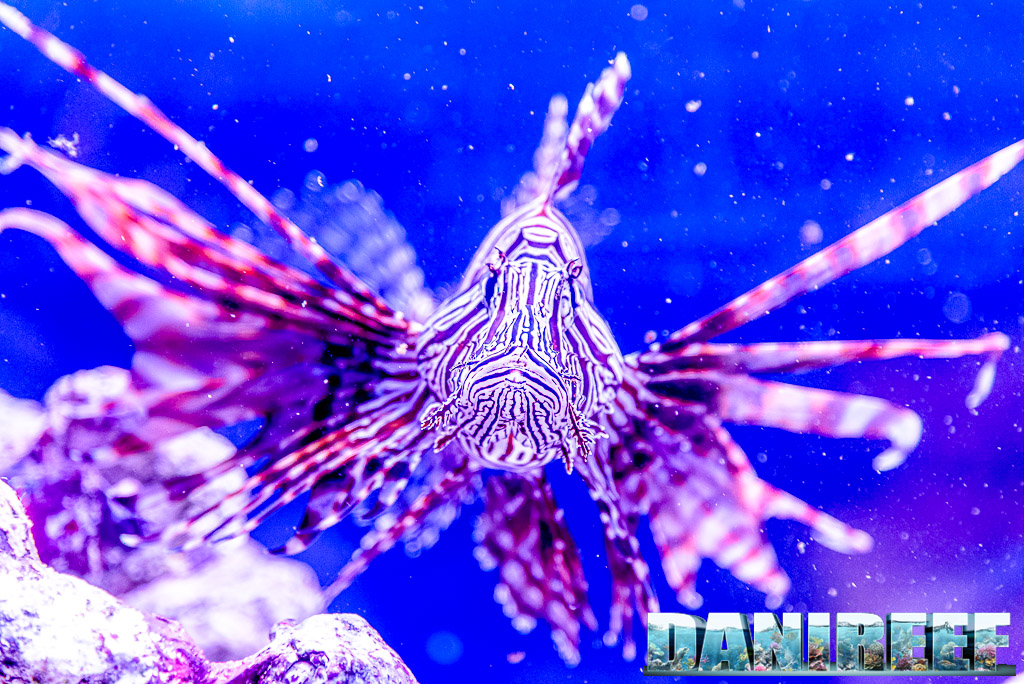
How did it get to the Mediterranean?
As to how it arrived in the Mediterranean, everyone agrees that it simply passed, like many other species, from the Red Sea through the Suez Canal, adding to the growing list of Lessepsian species (named after Guy de Lesseps, the French engineer who oversaw the construction of the Canal).
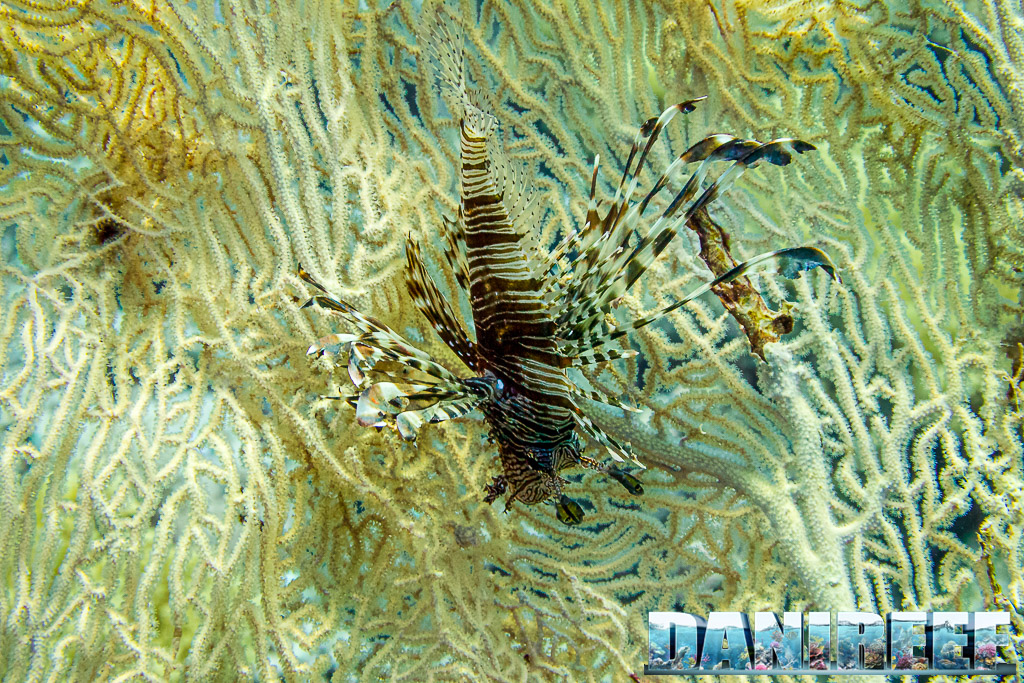
Of course, even in this case, the careless release of Pterois miles from private aquariums cannot be ruled out.
A chronological history of Mediterranean sightings of lionfish
In the Mediterranean Sea, a lionfish sighting was first recorded off the coast of Israel in 1991. (Golani & Sonin, 1992).
In two decades there were no more reports of sightings, until two specimens were captured off the coast of Lebanon in 2012. (Bariche et al ., 2013 ), indicating a new invasion event .(Bariche et al., 2017).
Since its reappearance, it has spread rapidly throughout the Eastern Mediterranean basin, including Cyprus (Jimenez et al., 2016; Kletou et al., 2016), Lebanon (Dailianis et al., 2016), Syria (Ali et al., 2016), Turkey (Özbek et al., 2017), and Greece (Giovos et al., 2018). Reaching Tunisia in 2015 (Dailianis et al., 2016) and Italy in 2016 (Azzurro et al., 2017). Until the two recent June 2023 sightings in Calabrian waters (Ispra).
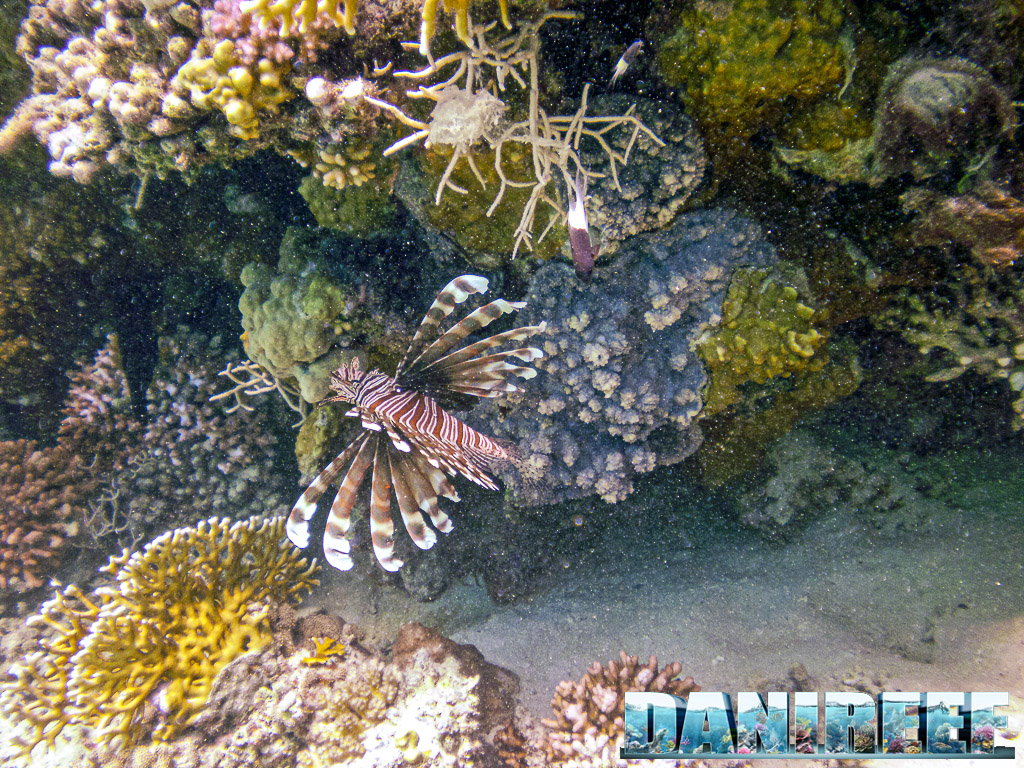
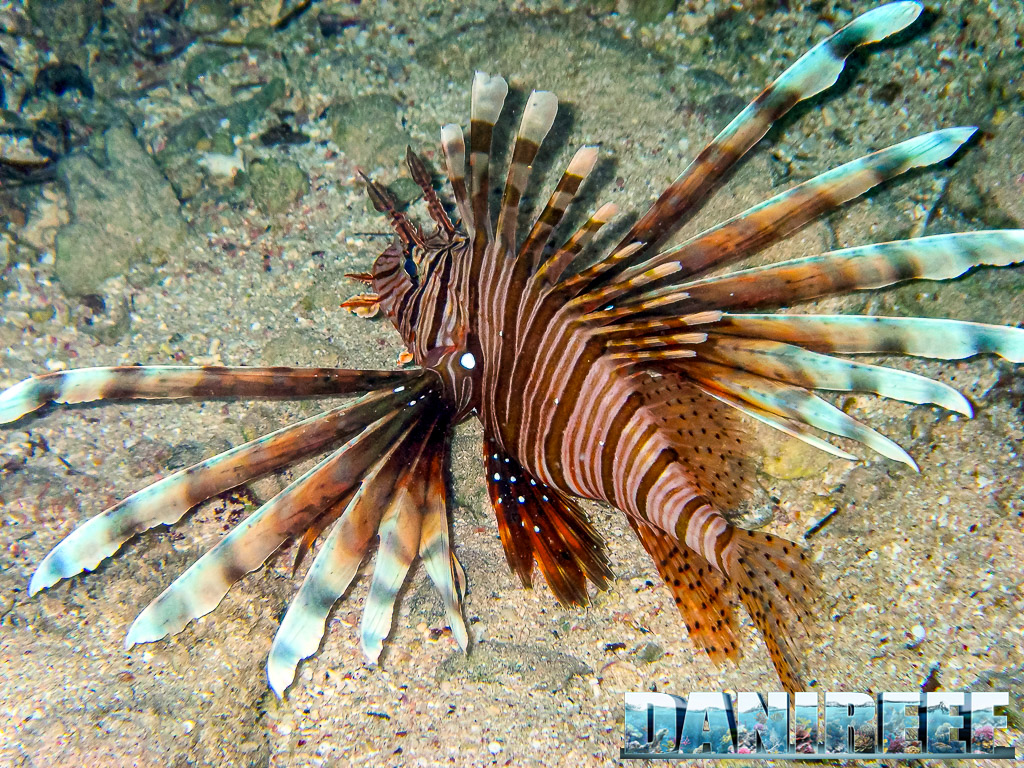
Let us state right away that these latest sightings do not confirm its stable presence in Italian seas.
In the study “I am here to stay: the biology and ecology of lionfish (Pterois miles) in the Mediterranean Sea.” published in April 2020 in the Journal of Fish Biology, it is stated that: “the extent of the spread, in the Mediterranean, would suggest that lionfish can no longer be eradicated, and that the development of a dedicated lionfish industry could help manage the situation and reduce some of the negative impacts of the species.”
Why now and not at the opening of the Suez Canal?
Many of you (or the few of you who have had the courage to read this far) may be wondering why the invasion of the Mediterranean is essentially starting now, rather than at the opening of the Suez Canal in 1869. One reason might be that the Suez Canal was recently expanded (in 2015). Allowing more opportunities for passage from native habitats in the Red Sea to the Mediterranean, but this may not be the only reason. Global warming in previous years may have led to greater opportunity for lionfish to establish and thrive in the Mediterranean (Hoegh-Guldberg and Bruno, 2010; Gattuso et al., 2015).
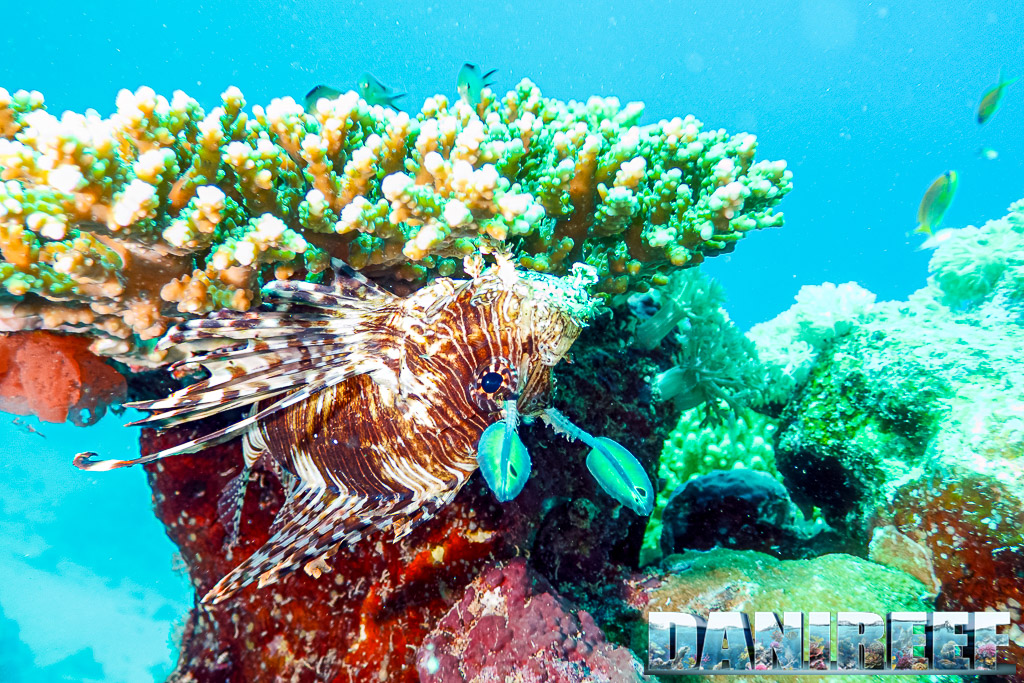
What are the risks of permanent settlement of lionfish in the Mediterranean Sea?
Thanks to a more than 20-year study of populations that have settled in the Caribbean and Gulf of Mexico, it is likely that we will see significant negative impacts on native populations in our sea as well. Such negative impacts have also inclined many conservation biologists to support active removal and even food consumption of the species.
Furthermore, as many of you who have one in your aquarium will already know, lionfish also pose risks to humans since the venom in their 18 spines can cause cardiovascular and neuromuscular effects, ranging from mild reactions, including swelling, to extreme pain and paralysis in the upper and lower limbs.
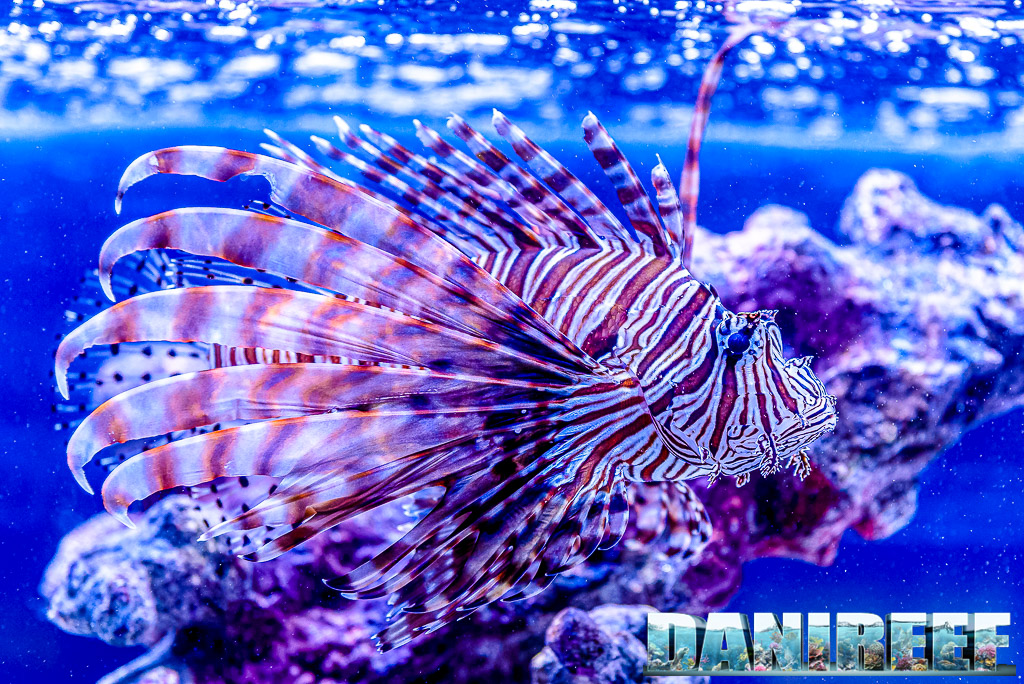
Conclusions by researchers
Savva Ioannis, lead author of the publication titled “I’m here to stay: the biology and ecology of lionfish (Pterois miles) in the Mediterranean Sea” said, “among the many threats to our marine ecosystems, biological pollution is less obvious to human perception. But in reality, it is powerful enough to disrupt the ecological balance. Although not all alien species successfully establish or damage their new environment, some acclimatize with relative ease. They show rapid spread and exert catastrophic impacts on local marine communities. This was the case with lionfish populations in the western Atlantic Ocean and now history is repeating itself in the Mediterranean Sea.”
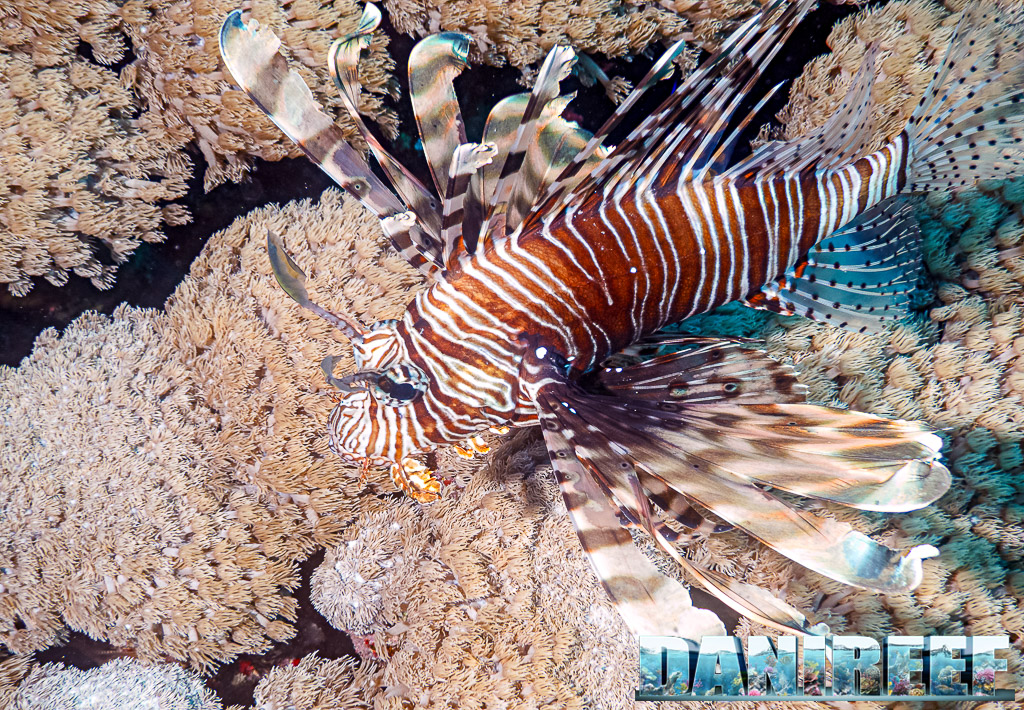
Jason Hall-Spencer, professor of marine biology at the University of Plymouth, said, “The recent rapid spread of lionfish in the Mediterranean is a serious concern for the balance of marine life in the region as this is the most harmful invasive fish species known to science. There is a need for biosecurity measures in the Suez Canal which is like a cut artery, with invasive marine species pouring through it.”
Mediterranean ecosystems are already severely stressed by climate change
The average water temperature in the Mediterranean is increasing by one degree every 30 years and the rate is only accelerating. One of the pressing questions that must be asked is how the various species living in the Mediterranean will adapt to this sudden warming. In recent years, evidence has accumulated that some species that, in order to adapt to global warming, have shifted their habitats to greater depths, while other studies have found that some species do not have this ability to move to colder waters. (Shahar Chaikin, Shahar Dubiner, Jonathan Belmaker, Aaron MacNeil. Cold-water species deepen to escape warm water temperatures. Global Ecology and Biogeography, 2021; DOI: 10.1111/geb.13414)
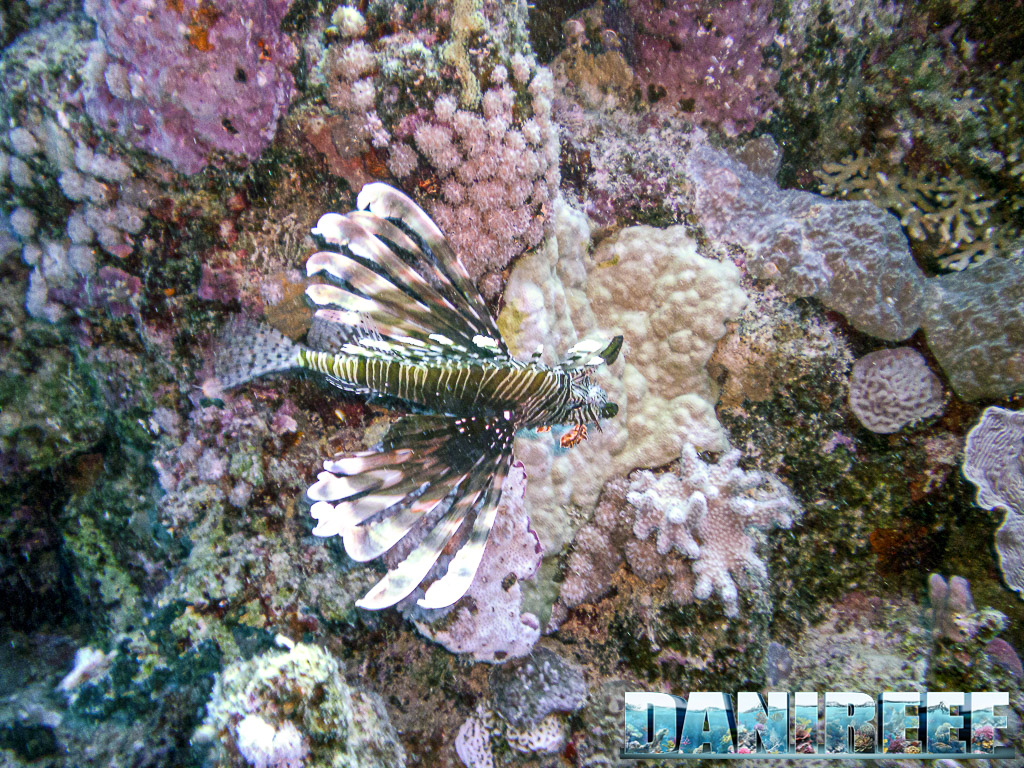
Watch out for those 4
The lionfish, along with the spotted pufferfish and rabbitfish, is the subject of the campaign ‘Watch out for those 4!‘ sponsored by the Ministries of Agriculture, Food Sovereignty and Forestry, Environment and Energy Security, Health and the General Command of the Harbour Master’s Office – with the collaboration of Ispra, CNR and the AlienFish project.
Researchers from Ispra, CNR-Irbim and Ente fauna marina mediterranea (AlienFish Project) invite anyone who has observed or caught one of these fish in Italian waters to send any photos/videos via WhatsApp to the dedicated number +39 320 4365210 or through the Facebook group Oddfish using the hashtag: #Attenti4
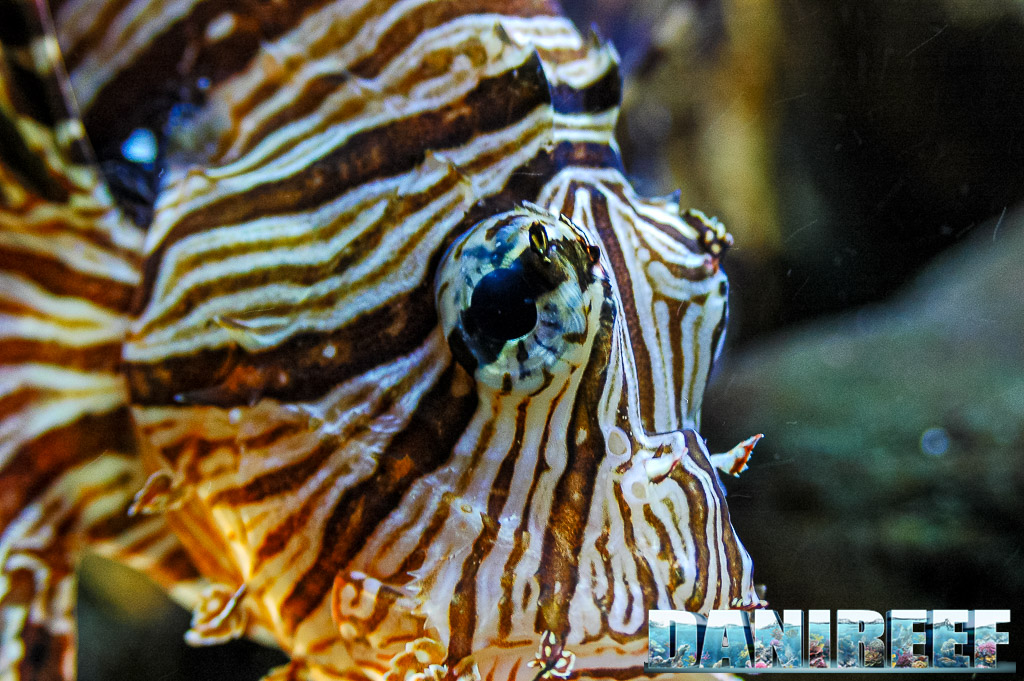
To deepen your knowledge about the danger of this beautiful species, we also leave you with this very interesting article: Lionfish reaches the Strait of Sicily. Maximum alert for the alien species.









